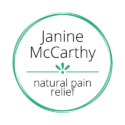How to get free from nightmare period pain
This is a recent testimonial from a client, who brought her daughter to see me for her nightmare period pain. I’ll let her tell the story:
“My 15 yr old daughter suffered terribly when she got her period. She couldn’t walk, had unbearable pain and vomiting and she missed days of school – not to mention the mood swings.
She had 3 sessions with Janine and the first period after that was fantastic – almost no pain, no vomiting or nausea, the pain meds worked and she went to school as normal. Then she had another session a week before her next period and again had a great result – the period symptoms were gone. We didn’t see Janine before her third period yet she had the same result, an easy period – as she puts it “this is magic”.
My daughter has now had three periods since her first session with Janine and the results are amazing. Her periods were completely different, all her symptoms had disappeared. No vomiting, no cramps or pain and she was able to go to school. Her mood was completely positive because she had no pain to deal with. Best move we ever made! Everyone was suggesting I should put her on the pill but I knew there was a better solution – and we found it.” – Annette
I had a similar experience in my teens and 20s. Unfortunately my doctor did put me on the Pill, which stopped my period pain and PMS but led to many other health problems including trouble conceiving when I was ready to have a family.
Yet this young woman’s experience shows how, with only a few sessions to balance her pelvic alignment, her body’s natural cycle was restored and those awful symptoms were gone. No diet change, no special exercises, no surgical or other interventions – and a LOT less pain meds.
How to get started
It doesn’t matter if your periods have just started or you’ve had them for years, you CAN get free of the pain and other symptoms.
If you or your daughter suffer with nightmare period pain, book an appointment to see me for in-person sessions. If you’re not in Melbourne (Australia) we can work together online with my Body Reset coaching package.
Take the Period Quiz
You can find out if you have a pelvic imbalance by taking my Period Quiz – and be sure to sign up for my free Period First Aid Kit to start balancing your body right now.
Photo credit: Kelli McClintock – Unsplash








